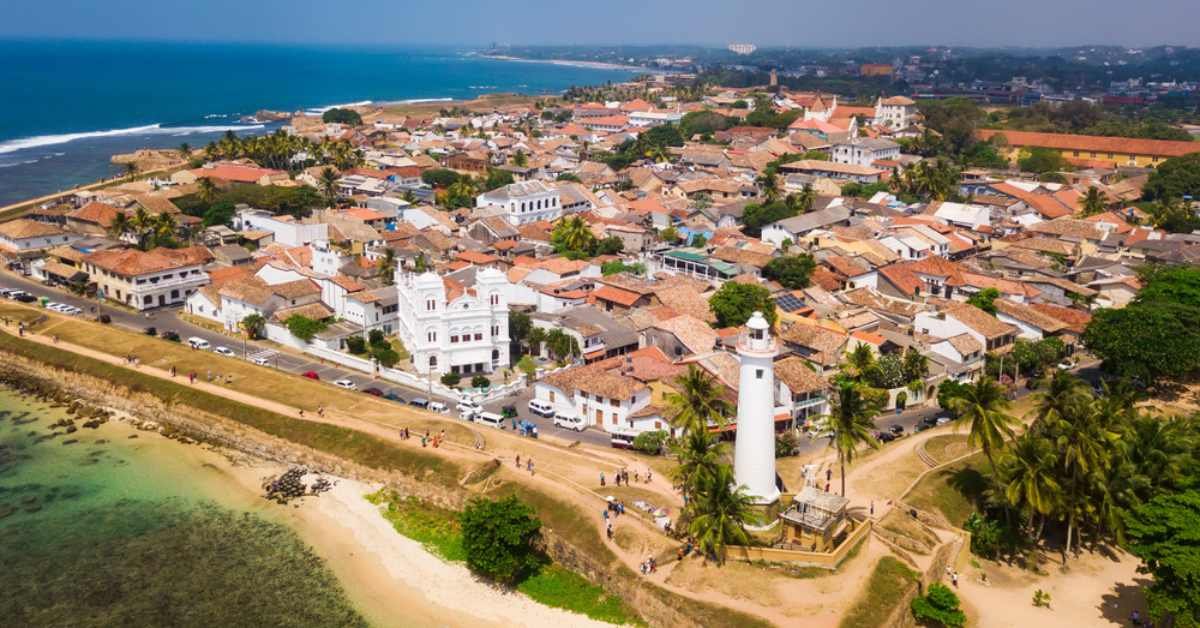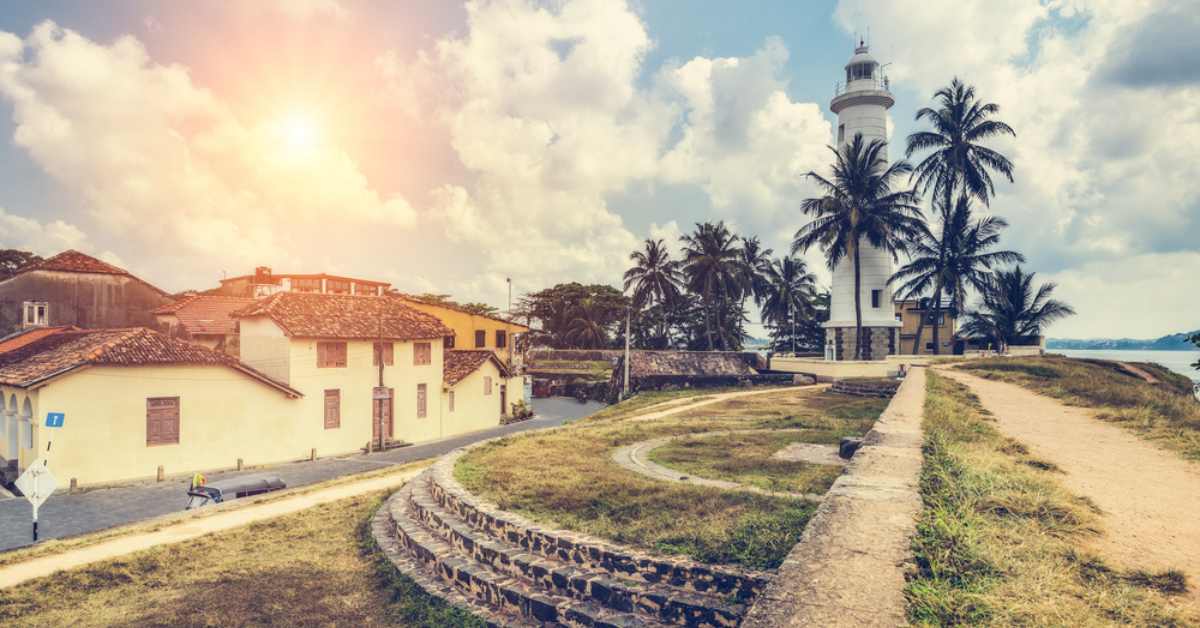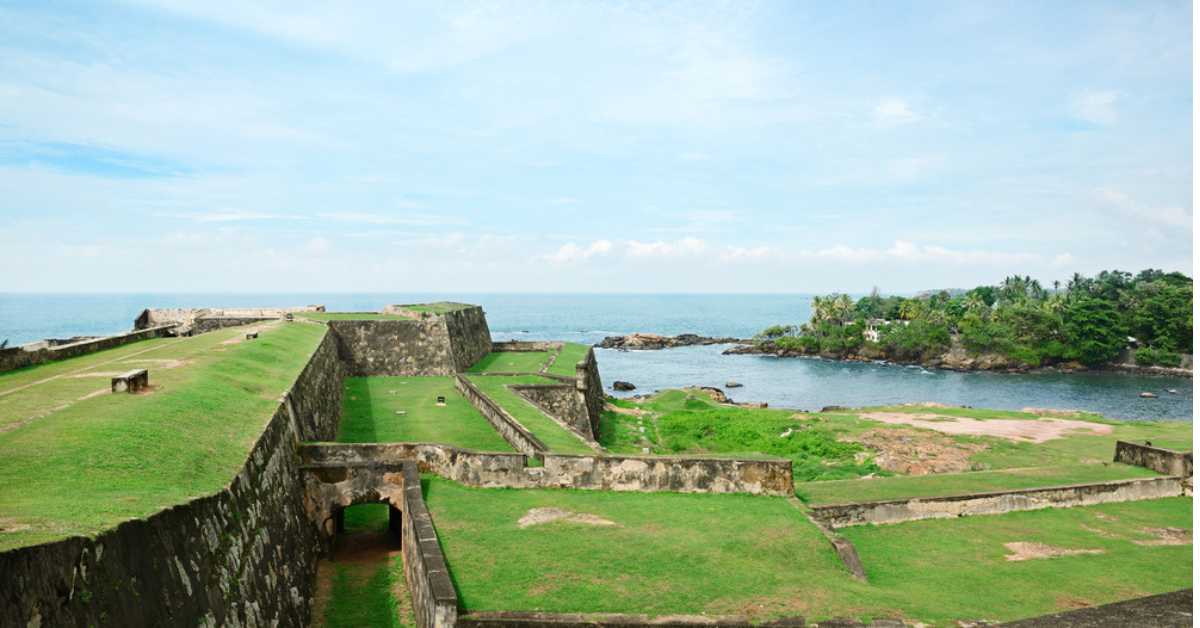
Galle Fort is a historic walled city in Sri Lanka’s southern region. It is a UNESCO World Heritage Site and one of the most popular tourist spots in the country. The Fort, which the Portuguese constructed in the 16th century, has seen the nation’s history. Today, it remains a significant monument that depicts Sri Lanka’s past and present. The significance of Galle Fort in Sri Lanka’s past and present will be discussed in this article.
The Portuguese Era
The advent of the Portuguese in Sri Lanka marked the beginning of European influence on the nation. In 1505, the Portuguese came to Colombo, and by 1597, they had gained possession of Galle Fort. To defend against pirates and other invaders, the Portuguese constructed the Fort.
Bastions, ramparts, and moats were included in the Fort’s construction and layout, based on European forms—the Church of St. Mary and the Dutch Reformed Church were two churches within the Fort.
The Dutch Era
The Portuguese lost possession of Galle Fort to the Dutch in 1658. The Dutch significantly altered the Fort’s building and layout, adding a new gate and expanding the moat. They also constructed several new structures, including the Governor’s House and the Warehouse.
Galle Fort became a significant spice and textile commercial hub during the Dutch era. The Dutch East India Company (V.O.C.) maintained a considerable presence at the Fort, and it was from this location that they governed its trade in Sri Lanka.
The British Era
The Dutch lost possession of Galle Fort to the British in 1796. The construction of a new courthouse and the expansion of the ramparts were two more architectural and layout modifications performed by the British.
Galle Fort developed into a significant hub for tea and rubber exports during the British era. Many brand-new barracks were built to accommodate soldiers, and the Fort was also utilised as a military base.
The 2004 Tsunami
In December 2004, a colossal tsunami struck Galle Fort, causing significant damage to the Fort and its surroundings. Several structures were devastated by the tsunami, which also claimed numerous lives.
Significant restoration efforts were made following the tsunami to remediate the damage. Today, Galle Fort has been completely repaired and is available to tourists.
Life in Galle Fort Today
Galle Fort is a well-known tourist site that provides a unique and intriguing glimpse into Sri Lanka’s illustrious past. Tourists may explore the small alleys and lanes, see the different museums and galleries, and take the breathtaking seaside vistas.
There are multiple hotels and guesthouses inside Galle Fort where guests can stay and several restaurants and cafés providing Sri Lankan and international cuisine.
Yet, the growing number of tourists has detrimentally affected Galle Fort. The infrastructure of the Fort needs to accommodate the rush of visitors, and there are concerns about the impact of tourism on the Fort’s sensitive environment.
Places to Go in Galle Fort
1. Dutch Reformed Church
One of the most recognisable sights in Galle Fort is the Dutch Reformed Church. It was constructed by the Dutch in the 18th century and had a distinctive blend of Dutch and Sri Lankan architectural elements. Visitors are welcome at the church, which is situated on Church Street.
2. National Maritime Museum
The National Maritime Museum Galle Fort is housed within the walls of Galle Fort and is a must-see for anybody interested in Sri Lanka’s maritime heritage. The museum’s relics, exhibitions, and displays highlight Sri Lanka’s extensive naval history.
3. Galle Lighthouse
A historical structure from the British era is the Galle Lighthouse. It has sweeping views of the Indian Ocean and is situated at the southernmost point of Galle Fort. Tourists can go to the lighthouse’s summit for a beautiful regional view. Read more and images
4. Historical Mansion Museum
The Historical Mansion Museum on Leyn Baan Street is a fantastic spot to learn about Sri Lanka’s colonial past. The museum’s collection of antiques and displays demonstrates Sri Lanka’s colonial rulers’ lifestyle and culture.
5. Old Gate, Galle Fort
When approaching the Fort, one can observe a plaque depicting the Royal Emblem of Ireland erected after the British conquered Galle. This plaque shows the British Crown, which is held by a lion on its right side and a unicorn on its left. Honi Soit QuiMal y Pense, “Whoever Thinks of the Devil Will be Possessed by the Devil,” covers the lion’s and unicorn’s plaque. Both of the quotations are taken from French expressions.
Following the British takeover of Galle Fort in 1796, the Dutch East India Company (V.O.C.) sign was removed, and the British Royal Emblem was carved.
6. Main Gate of Galle Fort
The Main Gate, also known as the British Bastion, is located just south of the Galle International Cricket Stadium and is flanked by the Star, Moon, and Sun Bastions. Before the Dutch extended it, the Portuguese supported this gate with a drawbridge and covered it with a moat. Nonetheless, the British had an ultimate say in the gate construction to improve traffic movement into and out of the Fort.
7. Fort Ramparts
The Portuguese, Dutch, and British constructed a system of walls and fortifications known as the Fort Ramparts. They encircle Galle Fort and provide a breathtaking view of the ocean. The fantastic views may be enjoyed by strolling along the ramparts.
8. Dutch Hospital Shopping Center Precinct
Inside the ramparts of Galle Fort sits the Dutch Hospital Shopping Precinct, a unique shopping attraction. It was initially constructed as a hospital by the Dutch in the 18th century and has subsequently been turned into a shopping district. Visitors may purchase souvenirs, handicrafts, and other exciting products at this old structure.
9. Galle Fort Library
The Galle Fort Library is a historic structure constructed by the Dutch in the 18th century. It is on Church Street and has a collection of books, records, and manuscripts demonstrating Sri Lanka’s illustrious literary heritage.
10. Maritime Archeology Museum
Inside the walls of Galle Fort, the Maritime Archeology Museum has a collection of relics and displays that highlight Sri Lanka’s maritime heritage. Visitors are welcome at the museum, which is situated on Queens Street. More Details
11. Moon Bastion
The Portuguese constructed the ancient stronghold known as the Moon Bastion in the 16th century. It provides a breathtaking ocean view and is situated at the southernmost point of Galle Fort. The fantastic views may be enjoyed by strolling along the ramparts.
12. All St. Anglican Church
The ancient All Saints Anglican Church is on Church Street in Galle Fort. It was constructed by the British in the 19th century and had a distinctive blend of British and Sri Lankan architectural elements. The church is available to the public and is an excellent venue to learn about Sri Lanka’s colonial past.
13. Meeran Jumma Mosque
The well-known Galle Lighthouse is seen from Meeran Jumma Mosque. In contrast to other notable mosques, Meeran Jumma Mosque has a more varied structural layout that combines British Victorian and Islamic styles. The Mosque boasts stained glass windows and a beautiful atrium, similar to a cathedral. In addition, it showcases the ornately adorned mihrab in the structure’s centre. The Mosque floor is decorated with colourfully painted ceramic tiles and tiny roof ornaments.
A well-known structure within the Galle Fort was believed to be constructed more than three centuries ago. Galle is home to a sizable Muslim community. Hence the site serves as an important place of prayer in this region. In addition, its architectural splendour makes it a popular tourist destination. In contrast to other mosques around the country, Meeran Jumma Mosque invites guests as long as they are appropriately attired and prepared to abide by the Mosque’s standards. Once you enter the Mosque, you will undoubtedly be amazed by its interiors; different parts of the Mosque have tiles of varying hues and distinct prayer places for men and women.
14. Sudharmalaya Temple
The current Buddhist temple was built in 1889 on property provided by Mr S.A. Wickramasinghe, a Mudliar and donor. In addition, most of the residents of Galle Fort were Buddhists, yet there was just one Buddhist temple until recently. By observing the architectural components of this temple, one may understand how Dutch and European design influenced foreign governments even in the creation of Buddhist holy places.
15. Galle Clocktower
The Galle Clock Tower is a tall, four-story structure from the late 19th century. The Galle Fort’s Clocktower, which overlooks one of the Fort’s three bastions, was built within the ramparts instead of the previous guardroom. The Galle clocktower was constructed in honour of Dr Antonisz, a renowned colonial surgeon. The clock was donated independently by the doctor Mudaliyar Samson de Abrew Rajapakse.
16. Moon Gallery
At Galle Fort’s Moon Gallery, you may… The chance to step into the past.
The Portuguese built this bastion in the 16th century as a large tower in the centre of the rampart facing the land side, with the Sun and Star Bastions on either side.
The Portuguese first used the name Conceicao for this place.
The Dutch renovated and enlarged this bastion in the 17th century, changing its name to Moon Bastion.
In 1667, the lower terraces of the bastions on the land side were reportedly fortified and developed by the then-Dutch Commander of the southern province, Adrian Van Ruthaz.
The lower terrace of the bastion was powerfully armed with no fewer than 20 artillery emplacements to resist enemy attacks from the land side successfully.
The Galle Heritage Foundation repaired the subterranean munitions storage beneath the upper terrace of the Moon Bastion, and it is now used as an informative space to present a brief overview of the site’s history.
17 . Old Powder Magazine
The Old Powder Magazine, also known as the Tharu Attalaya, is a historic structure within the Galle Dutch Fort in Sri Lanka. It is a testament to the Dutch colonial presence in the 17th century and played a crucial role in fortifying and defending the area.
Situated in the northern section of the Galle Dutch Fort, near the inner entrance gate, this powder magazine is enclosed by a sturdy and fortified wall. The purpose of this structure was to store gunpowder, ammunition, and other military supplies during the Dutch colonial era.
One distinctive feature of the Old Powder Magazine is its three accessible halls, which provide different perspectives when viewed from various sides. This design allowed for efficient storage and access to the materials housed within.
Today, the Old Powder Magazine stands as a historical monument, offering visitors a glimpse into the colonial past of the region. Its well-preserved architecture and strategic location within the Galle Dutch Fort make it a significant point of interest for those interested in Sri Lanka’s colonial history.
18. Black Fort
The Black Fort, located on the eastern side of the Galle Fort in Sri Lanka, is a historically significant pentagonal bastion. It overlooks the Galle harbour and has a circular platform at its summit, which once served as a strategic position for mounting cannons.
One of the intriguing aspects of the Black Fort is the origin of its name. It is said to have earned its name due to the use of coal and the dark black smoke that covered the area. This blackened appearance, in part, contributed to its moniker, the “Black Fort.”
This fortification played a pivotal role in the defense of Galle over the centuries. It was initially captured by the Dutch in 1640 and was employed to safeguard the fort against threats posed by the Portuguese and the Kandyans. During the British colonial era in Sri Lanka, the Black Fort continued to serve as an important military establishment, and it even housed the second police station in the country, eventually transforming into a prison.
Today, the Black Fort is a prominent tourist attraction and an iconic landmark within the Galle Fort. Visitors are drawn to its remarkable views of the harbour and the city. Additionally, the fort’s underground chambers offer a captivating insight into the history and significance of this defensive structure in the region’s past.
Article by
Ravindu Dilshan Illangakoon
As co-founder and Head of Content at Sri Lanka Travel Pages, I ensure that every blog post we publish is AMAZING.
Also Read
Museums in Colombo
Colombo, the vibrant capital of Sri Lanka, is home to a range of museums that…
Hiriwadunna Village Tour: A Guide to the Ultimate Tour Experience
Are you seeking a unique travel experience that blends nature, culture, and adventure? Then, look…
Best Museums in Down South Sri Lanka
Down South Sri Lanka is a treasure trove of history and culture, offering a captivating…
31 Best Places to Visit in Colombo
Colombo has become a popular visitor hotspot endeavouring various social, historical also nightlife attractions. Colombo…
Best Places to visit in Kelaniya
Kelaniya, a charming town near Colombo, is steeped in history, culture, and natural beauty, making…
37 Places to visit in Jaffna
The Jaffna region is one of the most attractive towns, and it was discovered straight…



